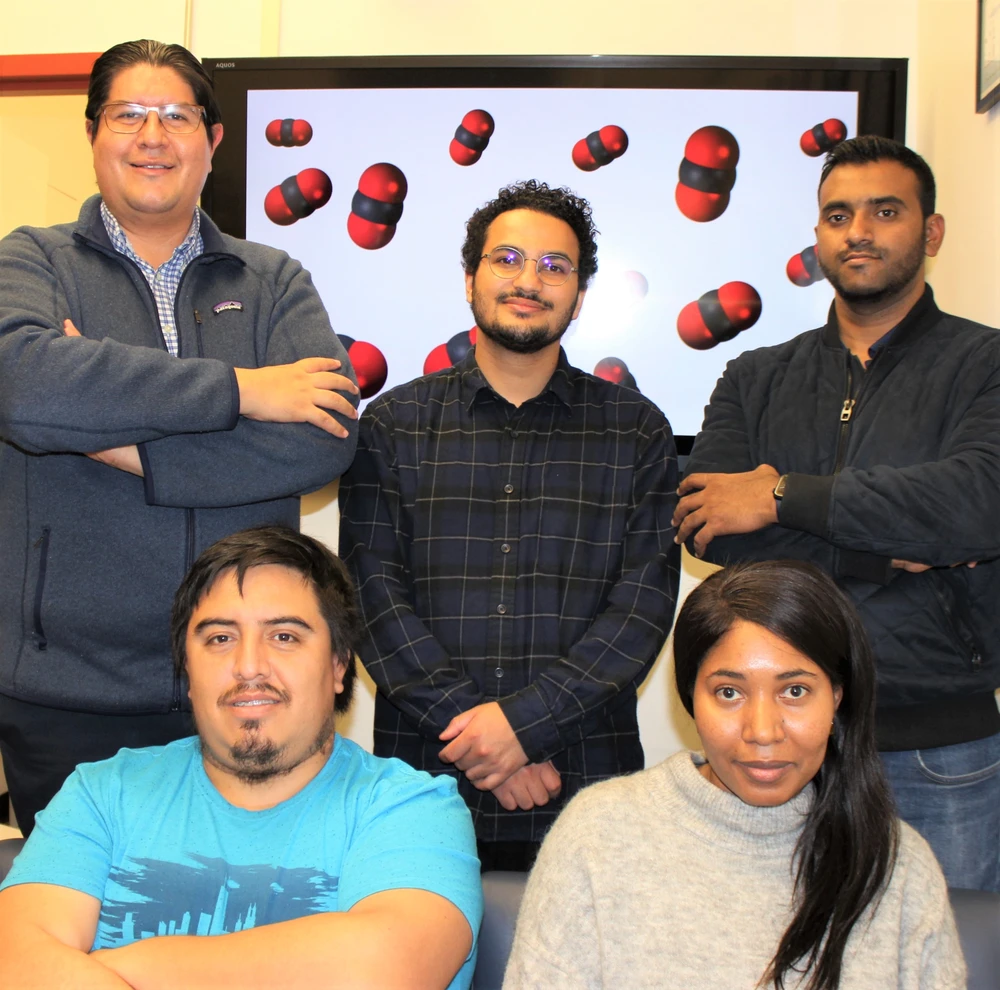
By Tracy Crane, Department of Chemistry
Building on previous research manipulating molecules at the electrochemical interface, chemistry professor Joaquín Rodríguez-López is leading a multi-institutional research team that will explore new electrochemical methods for removing carbon dioxide directly from the atmosphere known as direct air capture (DAC).
The project has been awarded $1.8 million by the U.S. Department of Energy, one of nine that the DOE is funding to advance cost-effective carbon capture technology. Current DAC methods are expensive and not economically viable on a large commercial scale, but the emerging technology is an expanding field in decarbonization and a key factor in the challenge to combat global warming and achieve net-zero emissions by 2050.
In addition to researchers in the Rodríguez-López Lab at UIUC, the research team includes Associate Professor Veronica Augustyn, materials science and engineering at North Carolina State University, and Associate Professor Jahan Dawlaty, chemistry at the University of Southern California.
Their project, “Reversible Electrochemical Capture/Release of Carbon Dioxide Mediated by Electrostatically Enhanced Charge Transfer,” is the result of collaboration sparked by an award made in 2019 as part of Research Corporation for Science Advancement’s Scialog Advanced Energy Storage initiative. Scialog Fellows collaborate in high-risk discovery research on untested ideas and communicate their progress in annual closed conferences.
The previous work of the research team involved better understanding fundamental questions about how molecules interact with electrodes.
“I had read a work from Jahan Dawlaty which I thought would help to quantify many effects that we had observed in other electrochemical systems that our lab works with such as redox flow batteries and modified electrodes,” Rodríguez-López said. “When I attended Scialog and I met with Dawlaty and Augustyn, I knew this was the perfect opportunity to gather a strong team to give some answers to these fundamental questions and potentially start developing technologies based on what we learned.”
The new objective of the research team led by Rodríguez-López is to exploit an energetically inexpensive electrostatic charge transfer mechanism for the capture and release of CO2 in a reversible and controllable fashion at electrode surfaces.
“We have some ideas about how we can manipulate the chemistry of certain types of molecules at the electrochemical interface, and CO2 seems an excellent candidate,” Rodríguez-López said. “Our job now is to explore this new territory by designing the interface, find the rules of reactivity, and evaluate how well it might work to capture CO2.”
The researchers believe the approach could create the opportunity to integrate DAC into renewable energy sources such as solar and wind energy and could also be an alternative that dramatically decreases the energy used in current state-of-the-art thermochemical approaches to DAC.
"We’ll be putting our expertise together in materials, electrochemical interfaces and spectroscopy to see if we can come up with a new mechanism of capturing carbon dioxide,” Augustyn said in a Research Corporation story about their Scialog collaboration.
Rodríguez-López said this project is really at the forefront of how we understand electrochemical interfaces.
“Our seed project has already exposed us to some unexpected results, and it has been thrilling to elucidate a consistent story from our various experiments,” he said. “I love the feeling of learning something new as we are doing it in the lab, and suddenly making connections to many other observations we have made on so many other projects.”
Of course, he added, the speed of the discovery process determines how fast their idea could be developed into a concept device.
“I feel confident that with the excellent students and postdocs here at Illinois, we will advance swiftly,” said Rodríguez-López, whose UIUC chemistry team on this project includes two postdoctoral researchers with the JRL group, Md. Sazzad Hossain and Adolfo Barros Romo, and Jeanne N’Diaye – a 2021 Beckman-Brown Postdoctoral Fellow collaborating with the JRL group and first-year chemistry graduate student Abdur-Rahman Siddiqui.
Rodríguez-López said that Romo and Hossain have been working a completely different system, but the team's hypothesis is that the basic science they have learned so far will apply to this particular CO2 project.
Romo is already making some of the molecules the research team will be using for this particular project, and for more than a year, Hossain has been laying out the framework of how the new methods that will be introduced are going to work.
"This project not only aims at solving a global problem, but it will also establish a new benchmark in fundamental electrochemical sciences - and the opportunity to achieve that is quite exciting," Hossain said.